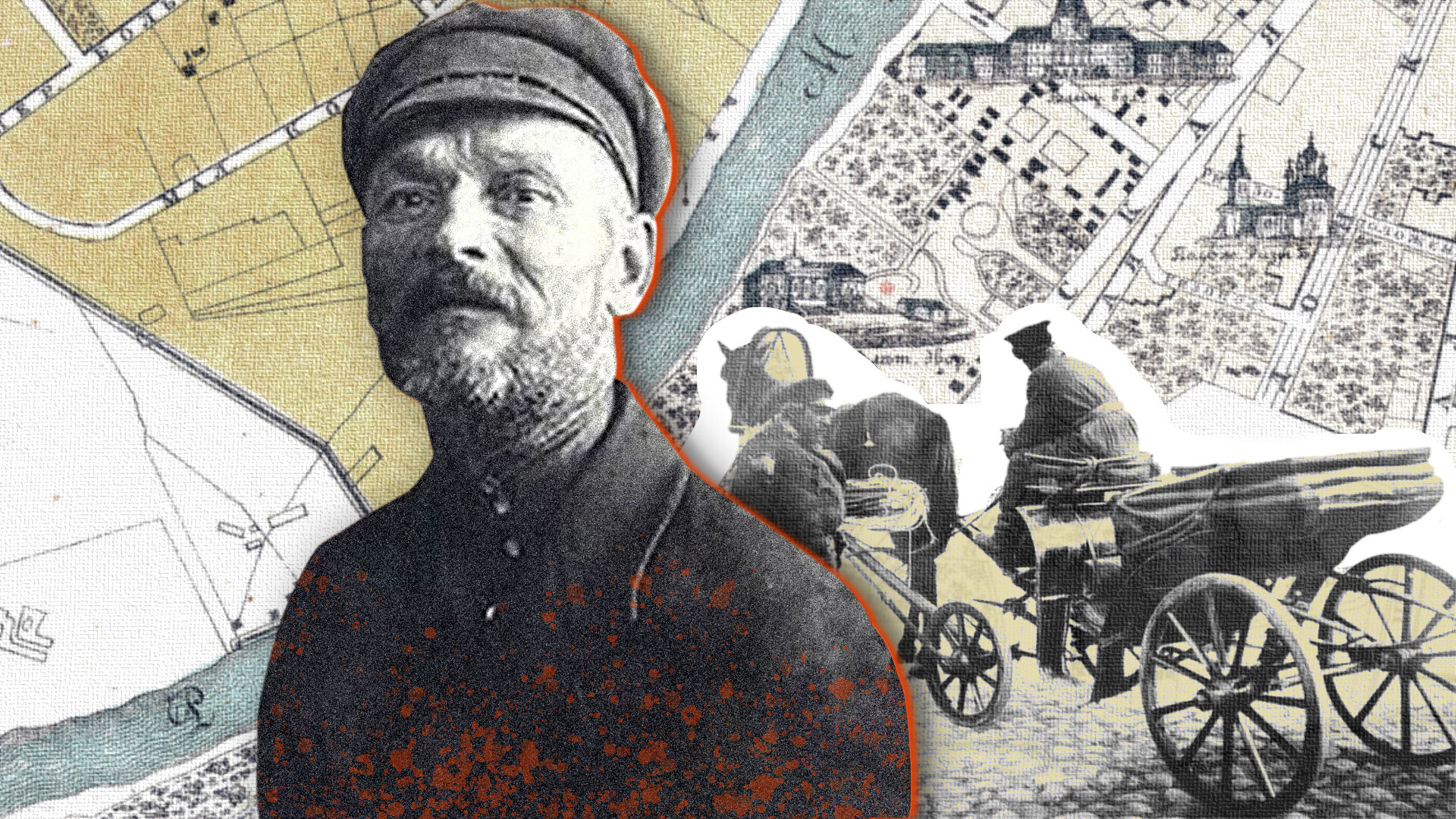
In Moscow in 1921, among the ruins of abandoned houses and construction sites, gray sacks began to be discovered containing the corpses of naked men. All the murders followed the same pattern: The victims’ heads had been smashed in with a heavy blow and their arms and legs were tightly tied to their abdomens. Horror gripped the capital of Soviet Russia, for it appeared that the young “socialist state of workers and peasants”, had a serial killer in its midst for the first time in its short history.
The police suspected that the killer lived somewhere in the city’s Zamoskvorechye district, since that is where the horrific discoveries were being made. Also, the killer was somehow connected with the horse market. It proved only possible to identify seven of the 22 victims. All of them were peasants visiting Moscow to buy a horse who had then disappeared without trace.

Moscow horse market.
A photo from “We Are Your Children, Moscow” by Yury LuzhkovThe investigators noted the extremely skilful way the sacks were tied - it was how people used to harness horses tied knots. Traces of oats were found at the bottom of some of them. However, according to the most credible theory, the serial killer was a taxi driver.
There were many people of this profession in the city, but the circle of suspects narrowed when a corpse was found that had been tied with a baby’s diaper. It appeared that the mysterious killer had a recently-born child in the house.
The police constantly patrolled the city, questioning traders at the horse market and staff employed in local taverns. They drew the attention of the law enforcers to one Vasily Komarov, who displayed very unusual behavior for a taxi driver. He never chased after clients like his colleagues, but, instead, simply stood as if watching out for someone. At the same time, he always had plenty of money.
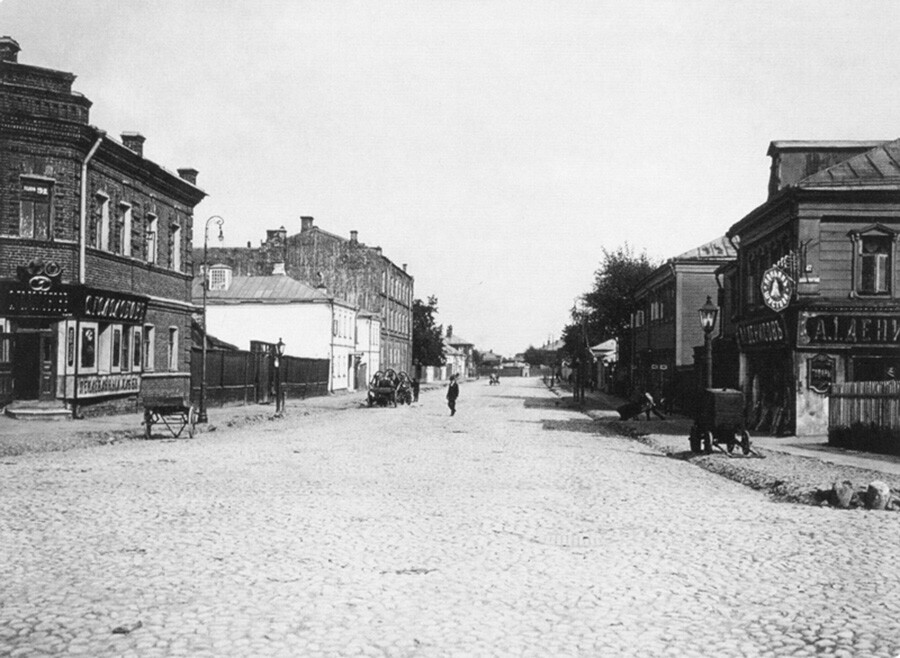
Shabolovka Street.
A photo by Gauthier-DufayeOn the night of May 18, 1923, police entered the home of 55-year-old Komarov on Shabolovka Street under the pretext of looking for an illegal alcohol pot still. The man fully kept his composure, but, when the officers approached a storage room, he suddenly jumped out of a window and fled. In the storage room, the still warm corpse of yet another victim was found.
The killer was caught the same night in a village near Moscow. It took the police very little time to discover all the details of his abominable deeds.
Vasily Komarov (real surname Petrov) had been born into the large family of a railway worker and had spent many years drifting through the empire, eking out a living taking casual jobs. After the Civil War, in the course of which he had worked his way up to the rank of Red Army platoon commander and distinguished himself by shooting captured White Army officers, Komarov settled in Moscow and started working as a private taxi driver.
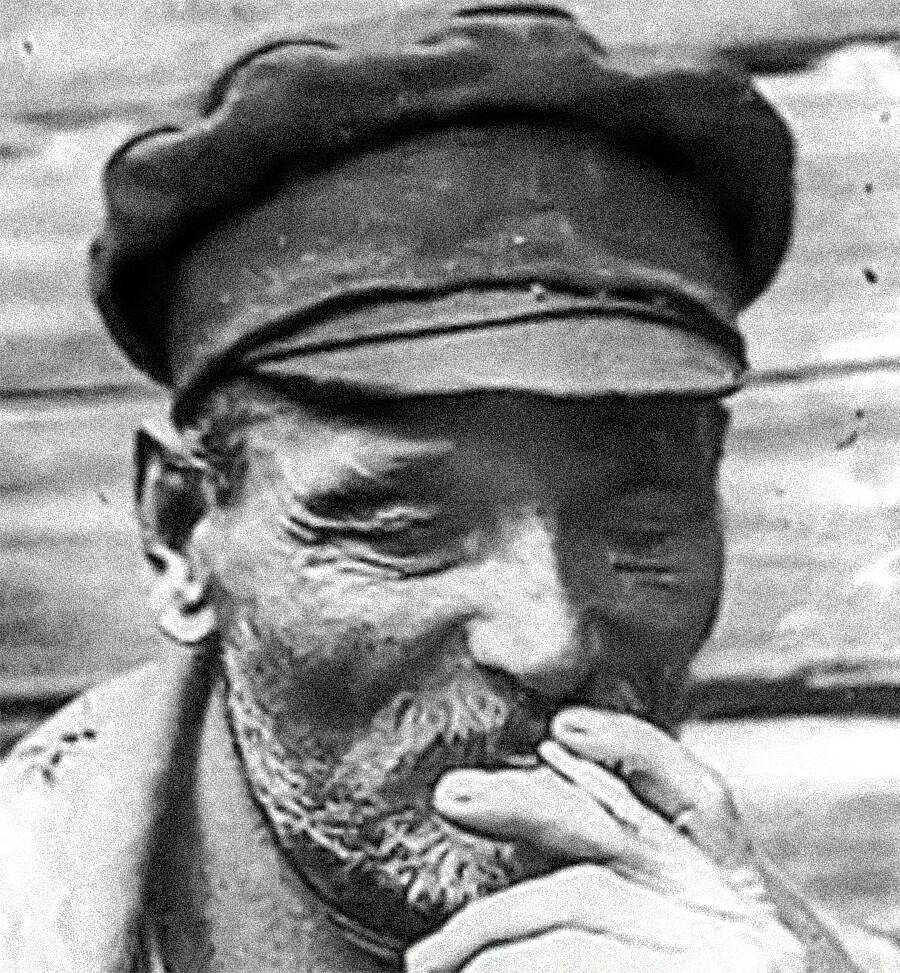
Vasily Komarov.
Public DomainAfter a certain time, the serial killer cooled towards his new trade, however. He wanted to get rich fast and finally thought up a way of doing so. Komarov would come to the horse market, watch out for a peasant buyer who was on his own (people like that wouldn’t be missed straight away) and offered to sell him his horse at a very low price, claiming that he badly needed the money. The “seller” then invited the delighted buyer home to talk through all the details and celebrate the deal with a drink. There, he plied the unfortunate man with alcohol and killed him in cold blood, taking his money and even his bloodied clothes.
“He murdered them efficiently and in a remarkably businesslike manner: always using the same method, the same hammer blow to the crown of the head, without any noise or haste, in the midst of conversing quietly,” wrote author Mikhail Bulgakov, who was working as a court correspondent. “It’s how an animal is slaughtered. Without pity, but also without any hatred. He made money out of it, but not a fantastic amount. The buyer had roughly the price of the horse in his pocket.”
No signs of wealth were found in Komarov’s house. The alcoholic taxi driver spent all his ill-gotten proceeds on booze.
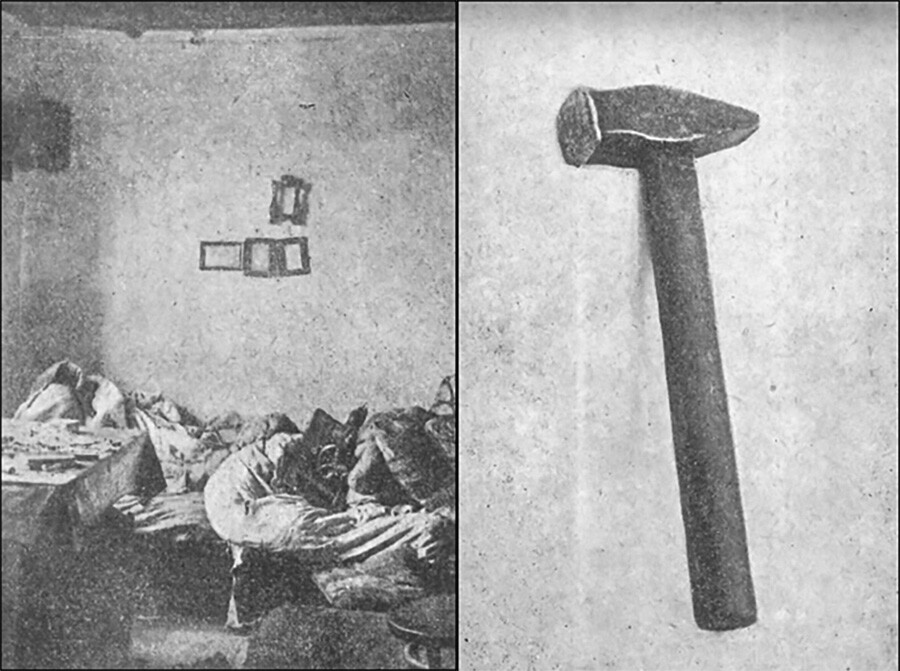
Komarov's mured weapon.
Mikhail Gernet/Prestupnyi Mir Moskvy, 1924The ‘Shabolovka Murderer’ was accused of a total of 29 killings, although he personally claimed a tally of 33 victims. Vasily Komarov felt no remorse for his actions, asserting that he was prepared to murder the same number of people all over again. When the land around his house started to resemble a cemetery, the “human beast” (as he was dubbed in the press) started concealing sacks with bodies in the ruins of houses or dumping them in the Moskva River.
Before committing one of his crimes, Komarov would use a specious excuse to get his wife and children out of the house. On one occasion, Sofia returned a little early and saw a gory scene. Instead of running to fetch the police, she became a loyal accomplice of her husband, cleaning up the room and washing the floor after the carnage.
In court, the serial killer behaved himself with “demonic detachment” and described his crimes in a level, monotone voice. He was completely indifferent to his own fate, declaring: “We’re all going to snuff it.”
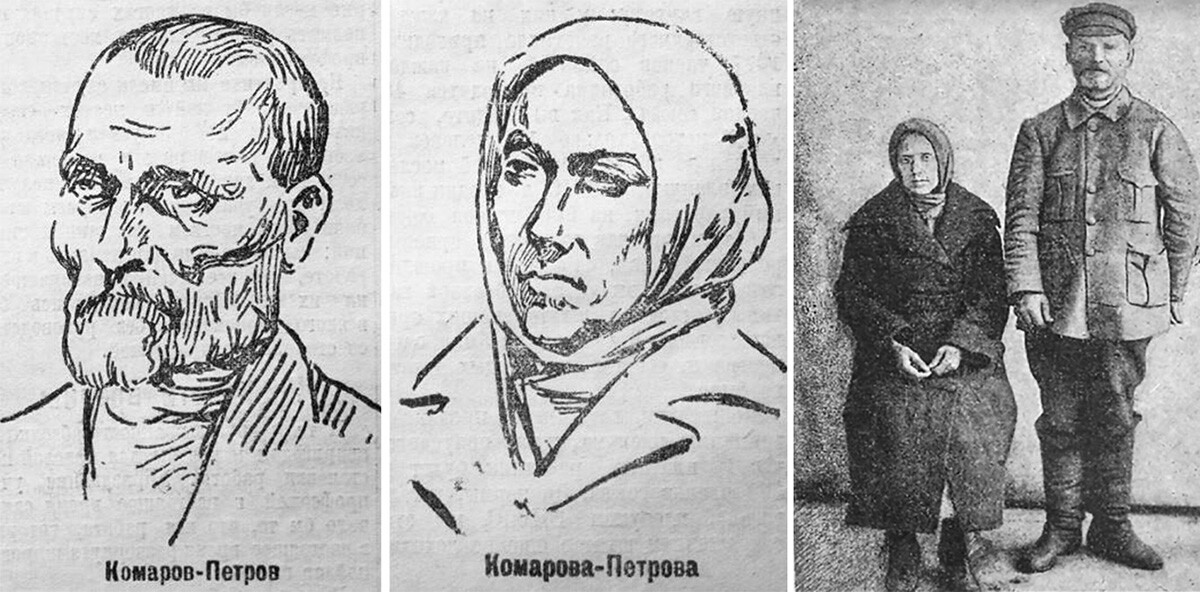
Vasily Komarov and his wife.
"Gudok" newspaperForensic experts diagnosed Vasily Komarov as an “impulsive psychopath with signs of alcoholic degeneration”, but declared him mentally fit. On June 18, 1923, he was executed by firing squad, along with his wife. His orphaned children were taken into state care.
If using any of Russia Beyond's content, partly or in full, always provide an active hyperlink to the original material.
Subscribe
to our newsletter!
Get the week's best stories straight to your inbox